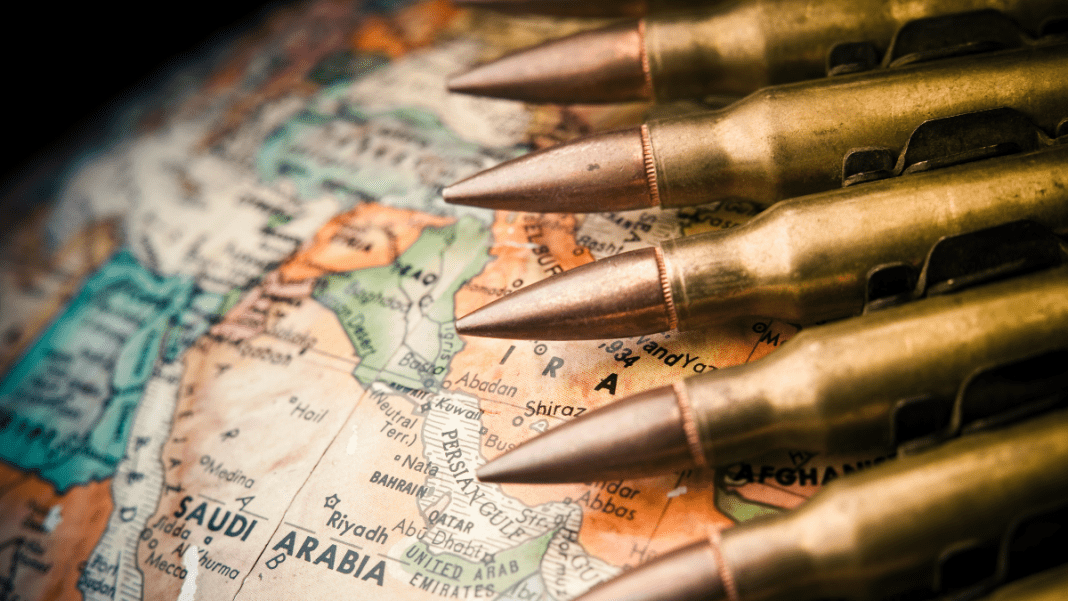The recent 12-day Israel-Iran war turned into one of the most intense and expensive military operations in the region in recent years.
U.S. Role in 12-Day War Cost Billions
Though the conflict was short, the scale of the United States’ involvement was massive—costing the U.S. several billion dollars. The U.S. played a major role in defending its ally, Israel, from a storm of nearly 600 incoming missiles launched from Iran, with just the missile interception efforts alone estimated to have cost over $800 million.
To stop these missiles, the U.S. quickly moved its high-tech missile defense systems into position. One of the most important systems used was the THAAD (Terminal High Altitude Area Defense). This powerful interceptor can destroy incoming missiles in the sky before they reach their targets. But using this kind of defense system comes at a very high price.
According to defense sources, the U.S. used between 15% to 20% of its THAAD missile stockpile during this war. Each interceptor missile costs around $10 million. That means just using the THAAD system cost the U.S. more than $800 million during those 12 days. This amount only covers the cost of one defense system and not the many other tools and weapons used during the conflict.
The U.S. had to act quickly to protect military bases, key allies, and its naval forces in the area. This required flying in special teams, radar systems, and other resources to the Middle East within hours of the first missile launch. All of this added to the final bill.
Nuclear Tension Boils: Overnight B-2 Bomber Strike Hits Iran’s Hidden Nuclear Bunkers
High-Tech Weapons Came at a High Cost
The Israel-Iran war became a battlefield where the most advanced U.S. weapons were used. To destroy missile sites and underground targets in Iran, the U.S. launched several Tomahawk cruise missiles. Each of these long-range missiles costs around $2 million. When fired in groups, the total cost rises very quickly. It is estimated that dozens of Tomahawks were used during the conflict.
In addition to cruise missiles, the U.S. deployed GBU-57 bombs, known as “bunker busters.” These are some of the heaviest and most powerful bombs in the U.S. arsenal. Each GBU-57 weighs around 14,000 kilograms and costs over $3.5 million. These bombs are designed to destroy deeply buried bunkers or fortified locations. Their use shows the level of seriousness with which the U.S. treated this short but intense war.
U.S. air operations also required a large number of fighter jets, bombers, and support aircraft. These planes flew missions from U.S. military bases in the region and from aircraft carriers in nearby waters. Flying military jets costs thousands of dollars per hour. A single mission involving fighter jets, fuel, bombs, and maintenance can cost over $100,000. Multiply that by hundreds of missions over 12 days, and the total becomes staggering.
The U.S. also had to make sure its bases in the region were well protected. Air defense systems, radar units, and personnel were moved or upgraded quickly. This fast action added millions more to the cost of the operation.
Naval Power and Military Logistics Took a Heavy Toll
The U.S. Navy played a key role in the war effort. Two carrier strike groups were moved into the region. Each carrier strike group includes an aircraft carrier, several destroyers, submarines, and supply ships. Operating just one of these groups for a day can cost over $20 million. For 12 days, that alone adds up to nearly half a billion dollars.
These naval groups were not just parked in the ocean. They actively participated in the war. They launched missiles, provided air defense, and helped control the region’s airspace and sea routes. Supporting these operations required thousands of sailors, jet fuel, ship fuel, food supplies, and ammunition. Every part of this operation had a price tag.
Trump Declares Middle East Peace, But Iran’s Missiles Rain Down Moments Later
Military logistics—how the U.S. moved people and equipment—also became a massive challenge. Troops, weapons, and support systems were flown in using large transport planes like the C-17. Refueling aircraft had to stay airborne to keep fighter jets in the sky. This complex support network required careful planning and came with very high costs.
The total cost of the U.S. involvement is estimated to be several billion dollars when adding everything together—missiles, bombs, planes, ships, fuel, logistics, and manpower. All of this spending took place over just 12 days. In recent years, there have been longer conflicts, but few have been this expensive in such a short time.
This war shows how quickly the price of war can rise when advanced technology and fast military response are involved. Even though the U.S. did not send large numbers of troops on the ground, the financial cost of protecting interests and allies in the Middle East during this brief but fierce conflict was incredibly high.
